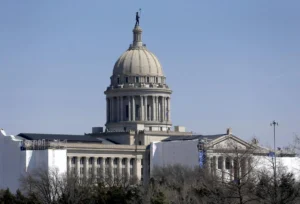Spill baby Spill

Way back in 2000, the Pacific States Oil Spill Task Force sent a letter to the U.S. Department of Transportation warning it of the threat of a major or even catastrophic spill in U.S waters. The letter cautioned the government that,”current capability to respond to such a spill warrants further consideration”.
One of the recommendations of the task force was that ‘the U.S Coast Guard (USCG) stress preparedness by emphasizing unannounced drills, performance standards in addition to planning standards and large scale regional, equipment deployment drills .’
Giving details of the risk assessment report, the letter spoke specifically of oil pollution from offshore exploration especially in deep waters, far from shore. “The further offshore, the more coastline will be impacted,’ the report added. It said,”spill response planning for offshore platforms should be focused on those areas in the U.S. being aggressively leased and explored i.e, the Gulf Of Mexico and Alaska. The USCG should reevaluate the area plans for these regions to ensure that there is adequate response equipment and capability to deal with a blowout scenario”.
Suggestions also included, a regional approach, the need to maintain a “trained cadre of personnel and raise, if necessary, the cap on the Oil Spill Response Fund. It also pointed out to the lack of organised, coordinated information collection effort across Federal Agency lines.
Like other studies before and after, this seems to have filled up void electronic spaces in government offices.The current liability for a spill in the U.S rests with the responsible party. So the government can afford to absolve itself. However the same report had warned the government that “maintaining a viable capability within the private sector is becoming less cost effective in a business sense. The advisability of augmenting the government’s role in marine salvage should be considered’.
So, what could have been a well planned and well practised response to a well envisaged emergency is turning out to be yet another exercise in learning. Cure through trial and error even as 210,000 gallons of oil gush into the Gulf of Mexico every day!
Imagine a hospital operation theatre and a surgeon trying to experiment with various surgical procedures even as the patient lies dying there. At the end of the day the legal rights of the surgeon may trump over those of the dead patient and the doctor may go Scot free.
In my opinion the U.S government is as responsible as the oil company B.P for this poor show of who’s in charge and what needs to be done when push comes to shove.
Here are some more reasons why there should be frustration at the government response :
Too much ambition or perhaps greed for profit on the part of BP? After the Wall Street debacle, this is not much of a surprise. Yet after Exxon Valdez and Katrina, the government (and the government is huge though all the blame, going by press coverage and the propensity to ask questions like, “has the President spoken to the BP officials?, nestles on the shoulders of the President and not the respective departments) can offer little explanation as to why every time when catastrophe strikes it’s caught off guard. Perhaps its time the US government start coming forward as the mammoth structure that it is and stop taking shelter, when disaster strikes under the White House umbrella.
Coming back to British Petroleum. The company, has a history of cost cutting especially in the area of maintenance. The 2007 Baker report into the Texas city blast questioned British Petroleum safety performance and its willingness to implement lessons learnt from previous serious accidents including the one in Grangemouth, Scotland in the year 2000. The panel emphasised that short term cost cuts were apparent in both cases. A report from the chemical safety and hazards investigation board (CSB) said that there was an iron clad case for pinning some of the responsibility on budget cuts. The report pointed out that between 1992 and 2000 there was an 84 per cent cut in maintenance spending at Texas city.
Keeping the task force report in mind and BP’s track record and the fact that drilling in such deep waters is a recent exercise, extra precautions/inspections needed to be taken.
– Reportedly, drilling in the depths of Gulf of Mexico is a different game altogether than what BP is used to- having operated mostly in Alaska and North Sea. Both are relatively simple.
-The sheer geological complexity of Gulf of Mexico particularly around mobile salt and trapping and imaging problems created by the mobile salt make exploration difficult in the Gulf
An interview given a few years back talks of the ambitious plan of BP and how they saw an opportunity to transform the business. “Instead of sustaining production of 200,000 barrels of oil a day,we would potentially grow a business that could deliver 500,000 barrels a day”. Deeper exploration pushed production levels and the target was to keep pushing for higher and higher daily production. Was the deep water horizon oil rig built with these additional capabilities? Of course now there are reports of accidents and how the rig, drilling the world’s deepest offshore well, may have suffered a structural fault in one of the accidents.
Did any of the government departments bother to check the implications of all this?
David Rainey, exploration manager for BP in the deep water Gulf of Mexico in a March 2002 interview said, “one of the lessons we have learned about the Gulf of Mexico is never to take it for granted. It will continue to surprise us .. we are going to do our best to stay humble and avoid the trap of thinking we have all the answers.’
Little did he know at that time how prophetic these words would turn out.



